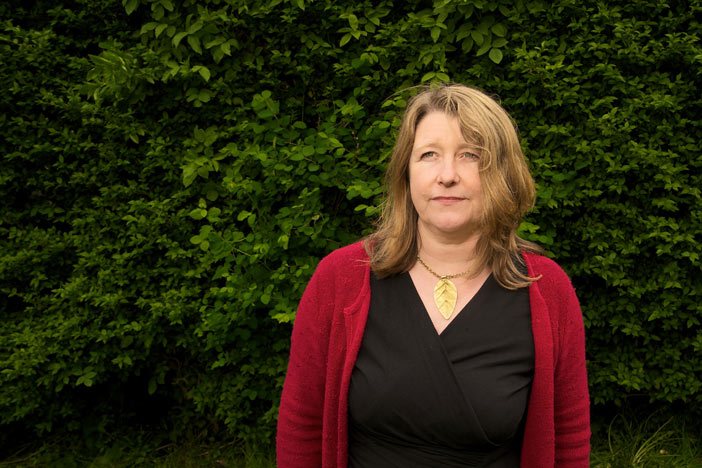The collapse of the Rana Plaza factory in Bangladesh earlier this year, with a death toll topping 1000, has reawakened public awareness of the human cost of cheap, mass produced clothing. Siobhan Wilson of Queens Road’s Fair shop is a speaker on fair trade and ethical fashion issues.
When did major fashion chains start using Bangladeshi labour?
Bangladesh’s garment industry has been growing since the early 80s when the country’s economy opened up to foreign investment. Companies such as Tesco, Asda and Primark source their clothes from Bangladesh due to very low labour costs. In the Rana Plaza factory, the high street companies involved were Primark, Mango, Benetton and Matalan.
How common are tragedies such as Rana Plaza?
They’re too common. In November 2012 the Tazreen Factory fire (suppliers to Walmart, C&A and Edinburgh Woollen Mill amongst others) in Bangladesh killed 112 people. Last year over 300 people died in Karachi, Pakistan in a factory again supplying the European clothing market. This is an issue in many developing countries due to low wages and lack of support from governments for labour and safety regulations. Countries are competing to supply the cheapest labour and workers’ rights will be overlooked.
What positive steps have been taken since?
Overseas companies do not own the factories and until this horrific incident in Rana Plaza have not been taking responsibility for the fires in Bangladesh and elsewhere. The major positive outcome of this tragedy is that many retailers have signed up to the International Labour Organisation approved Bangladesh Fire & Building Safety Agreement and the country’s government is finally supporting their rights of garment workers to join trade unions. This makes overseas companies and local government more accountable for the working conditions of Bangladeshi workers.
I personally think certification telling the consumer under what conditions the clothes are made is needed. Consumers have the power to set the standards for these companies and certification of the garment-making process would enable them to use this power.
How is buying Fair Trade different to buying from the high street?
At the moment, high street production is primarily about making clothes at the lowest price possible and focusing on profits, with little regard for the workers. Fair Trade’s focus is on enhancing the lives of people making the garments and growing the cotton. It lifts people out of absolute poverty to a life of self-sufficiency. It also focuses on the impact of production on the environment and supports education and healthcare in the community.
In what ways can we become more responsible in our buying habits?
Our expectations as consumers must change. Always wanting to buy things at unsustainably low prices cannot come without a human cost. But although we all think it’s just the cheaper brands on the high street that allow the conditions in Bangladesh to carry on, it isn’t. We need to re-educate ourselves into buying less often, choosing better quality and Fair Trade clothes, recycling more of our wardrobe and supporting local and ethical businesses, including British ones. Shopping continually for the best bargain is not good for our economy, for people in the developing world or for the planet.
How can consumers pressure the industry for change to be made?
Make sure the retailers you use have signed the Bangladesh Fire & Building Safety Agreement. At time of writing Gap and Asda are the main brands that have not signed up, so keep the pressure on! You should also check retailers’ websites and see what they say about their suppliers. If there’s no information there, email them, or ask on Facebook or in store about their supplier trading policy. You can also sign up to campaigns like War On Want, Clean Clothes Campaign and Labour Behind The Label. Like them on Facebook and even donate to them. They’re all doing great work.
What agreements does the Fair Trade movement currently have with the chains?
The UK’s Fairtrade Foundation currently only certifies cotton production by farmers but not the garment production. However, pioneering, fully dedicated Fair Trade brands such as People Tree and Pachacuti are developing a process that potentially could certify every stage of the supply chain. The amount of work and integrity this takes really needs to be applauded. They might supply some concessions in high street shops but have a completely separate supply chain that does not overlap with the high street.
How do Fair Trade clothing prices compare with high street prices?
In regards to Fair Trade pricing it varies on brand, product, quality and design. The choices are growing and there are some young, exciting brands emerging. I think it competes well at the mid to higher price level and in fact you can get much more for your money as organic cotton and the natural materials are gorgeous. You can also get great bargains if you buy fair trade items in sales. Fair Trade is not trying to be the cheapest item on the high street as it promotes buying less but better quality. You can find good bargains on the internet and on Fair Trade shop sale rails! In regards to changes to prices on the high street, an increase of less then a £1 per garment would ensure safety conditions and an increase in wages in Bangladesh.
FYI
Shop: thefairshop.co.uk
Petition: mswandas.co.uk/1percent
Photo by James Kendall



